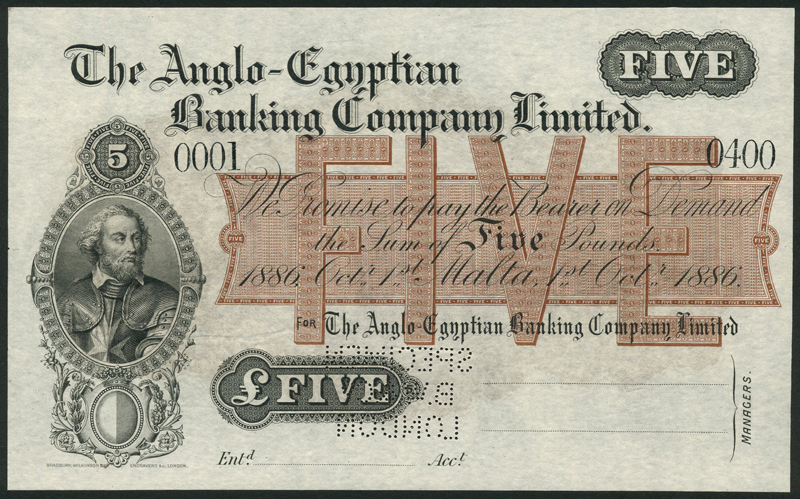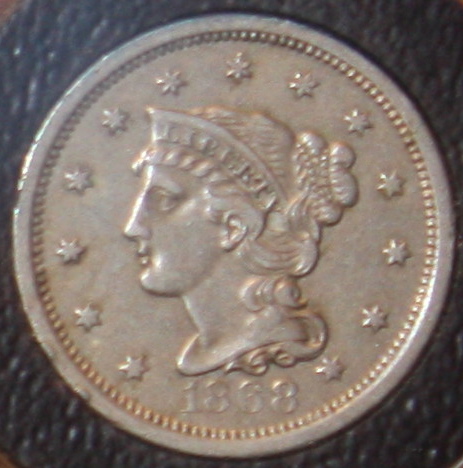|
Specimen Banknote
A specimen banknote is printed generally in very limited quantities for distribution to central banks to aid in the recognition of banknotes from a country other than their own. In some cases, specimen banknotes are printed in less limited quantities distributed to commercial banks, or even to commercial enterprises and the public at large in order to familiarize users about new designs. In addition, specimen banknotes are sold in some countries to collectors (often in special commemorative folders or albums). They have also been distributed by banknote printers (such as the American Bank Note Company) as examples of their craftsmanship. Occasionally, specimen banknotes are distributed as gifts to dignitaries or to employees of central banks, often in special presentation albums. To avoid use of specimen banknotes as legal tender notes, the banknotes are deformed, typically by being overprinted and/or punched (perfin) with an inscription such as "SPECIMEN", "SPECIMEN NO VALUE" ... [...More Info...] [...Related Items...] OR: [Wikipedia] [Google] [Baidu] |
Central Banks
A central bank, reserve bank, or monetary authority is an institution that manages the currency and monetary policy of a country or monetary union, and oversees their commercial banking system. In contrast to a commercial bank, a central bank possesses a monopoly on increasing the monetary base. Most central banks also have supervisory and regulatory powers to ensure the stability of member institutions, to prevent bank runs, and to discourage reckless or fraudulent behavior by member banks. Central banks in most developed nations are institutionally independent from political interference. Still, limited control by the executive and legislative bodies exists. Activities of central banks Functions of a central bank usually include: * Monetary policy: by setting the official interest rate and controlling the money supply; *Financial stability: acting as a government's banker and as the bankers' bank (" lender of last resort"); * Reserve management: managing a country's ... [...More Info...] [...Related Items...] OR: [Wikipedia] [Google] [Baidu] |
Banknote
A banknote—also called a bill (North American English), paper money, or simply a note—is a type of negotiable promissory note, made by a bank or other licensed authority, payable to the bearer on demand. Banknotes were originally issued by commercial banks, which were legally required to redeem the notes for legal tender (usually gold or silver coin) when presented to the chief cashier of the originating bank. These commercial banknotes only traded at face value in the market served by the issuing bank. Commercial banknotes have primarily been replaced by national banknotes issued by central banks or monetary authorities. National banknotes are often – but not always – legal tender, meaning that courts of law are required to recognize them as satisfactory payment of money debts. Historically, banks sought to ensure that they could always pay customers in coins when they presented banknotes for payment. This practice of "backing" notes with something of substance is t ... [...More Info...] [...Related Items...] OR: [Wikipedia] [Google] [Baidu] |
Trial Design For A 1 Rupee Banknote
In law, a trial is a coming together of parties to a dispute, to present information (in the form of evidence) in a tribunal, a formal setting with the authority to adjudicate claims or disputes. One form of tribunal is a court. The tribunal, which may occur before a judge, jury, or other designated trier of fact, aims to achieve a resolution to their dispute. Types by finder of fact Where the trial is held before a group of members of the community, it is called a jury trial. Where the trial is held solely before a judge, it is called a bench trial. Hearings before administrative bodies may have many of the features of a trial before a court, but are typically not referred to as trials. An appeal (appellate proceeding) is also generally not deemed a trial, because such proceedings are usually restricted to a review of the evidence presented before the trial court, and do not permit the introduction of new evidence. Types by dispute Trials can also be divided by the type ... [...More Info...] [...Related Items...] OR: [Wikipedia] [Google] [Baidu] |
Automated Teller Machine
An automated teller machine (ATM) or cash machine (in British English) is an electronic telecommunications device that enables customers of financial institutions to perform financial transactions, such as cash withdrawals, deposits, funds transfers, balance inquiries or account information inquiries, at any time and without the need for direct interaction with bank staff. ATMs are known by a variety of names, including automatic teller machine (ATM) in the United States (sometimes redundantly as "ATM machine"). In Canada, the term ''automated banking machine'' (ABM) is also used, although ATM is also very commonly used in Canada, with many Canadian organizations using ATM over ABM. In British English, the terms ''cashpoint'', ''cash machine'' and ''hole in the wall'' are most widely used. Other terms include ''any time money'', ''cashline'', ''tyme machine'', ''cash dispenser'', ''cash corner'', ''bankomat'', or ''bancomat''. ATMs that are not operated by a financial i ... [...More Info...] [...Related Items...] OR: [Wikipedia] [Google] [Baidu] |
Hell Money
Hell banknotes in Thailand resembling United States Dollar, and Thai Baht banknotes">Thai_Baht.html" ;"title="United States Dollar, and Thai Baht">United States Dollar, and Thai Baht banknotes Hell money () is a modernized form of joss paper printed to resemble legal tender bank notes. The notes are not an official form of recognized currency or legal tender as their sole intended purpose is to be offered as burnt offerings to the ancestor veneration, deceased as a solution to resolve their assumed monetary problems in the afterlife. This ritual has been practiced by modern Chinese and across East Asia since the late 19th century, and some Wicca-based faiths in recent years have adopted this practice. Early 20th century examples bore resemblance to minor commercial currency of the type issued by businesses across China until the mid-1940s. The identification of this type of joss paper as "hell bank notes" or "hell money" is largely a Western construct, since these items are ... [...More Info...] [...Related Items...] OR: [Wikipedia] [Google] [Baidu] |
Operation Bernhard
Operation Bernhard was an exercise by Nazi Germany to forge British bank notes. The initial plan was to drop the notes over Britain to bring about a collapse of the British economy during the Second World War. The first phase was run from early 1940 by the (SD) under the title (Operation Andreas). The unit successfully duplicated the rag paper used by the British, produced near-identical engraving blocks and deduced the algorithm used to create the alpha-numeric serial code on each note. The unit closed in early 1942 after its head, Alfred Naujocks, fell out of favour with his superior officer, Reinhard Heydrich. The operation was revived later in the year; the aim was changed to forging money to finance German intelligence operations. Instead of a specialist unit within the SD, prisoners from Nazi concentration camps were selected and sent to Sachsenhausen concentration camp to work under SS Major Bernhard Krüger. The unit produced British notes until mid-1945; estimates v ... [...More Info...] [...Related Items...] OR: [Wikipedia] [Google] [Baidu] |
Pattern Coin
A pattern coin is a coin which has not been approved for release, but produced to evaluate a proposed coin design. They are often off-metal strike (using metals of lower value to test out the dies), to proof standard or piedforts. Many coin collectors collect and study pattern coins because of their historical importance. Many of the world's most valuable coins are pattern coins; nearly 25 of the pieces listed in ''100 Greatest US Coins'' are pattern coins. English patterns The first English coin that can be identified with certainty is a groat, originally worth fourpence. This piece, an example of which was illustrated and sold in the Dodsley Cuff sale of the mid-19th century, had crowns in place of the usual three pellets in each quarter of the reverse. Patterns are particularly identifiable and exist in larger numbers from the reign of Elizabeth I onwards. The experimental base metal issues of all coinage prior to the mid-18th century have been well preserved. Boulton's ... [...More Info...] [...Related Items...] OR: [Wikipedia] [Google] [Baidu] |
Specimen Stamp
A specimen stamp is a postage stamp or postal stationery indicium sent to postmasters and postal administrations so that they are able to identify valid stamps and to avoid forgeries. The usual method of invalidating the stamps is either overprinting in ink or perforating the word ''Specimen'' across the stamp and where English is not the common language, the words ''Muestra'' (Spanish), ''Monster'' (Dutch), ''Muster'' (German) or ''Образец'' (Russian, 'Obrasetz') have been used instead. History Specimen stamps have been in use since the earliest issues and in 1840 examples of the Penny Black, Two penny blue and the Mulready Letter Sheet were sent to all British postmasters. These stamps were not marked in any way, but when the first British one shilling stamp was produced in 1847, examples sent to postmasters were marked with the word ''Specimen'' in order to prevent their postal use. Since 1879, members of the Universal Postal Union have supplied stamps to each oth ... [...More Info...] [...Related Items...] OR: [Wikipedia] [Google] [Baidu] |






